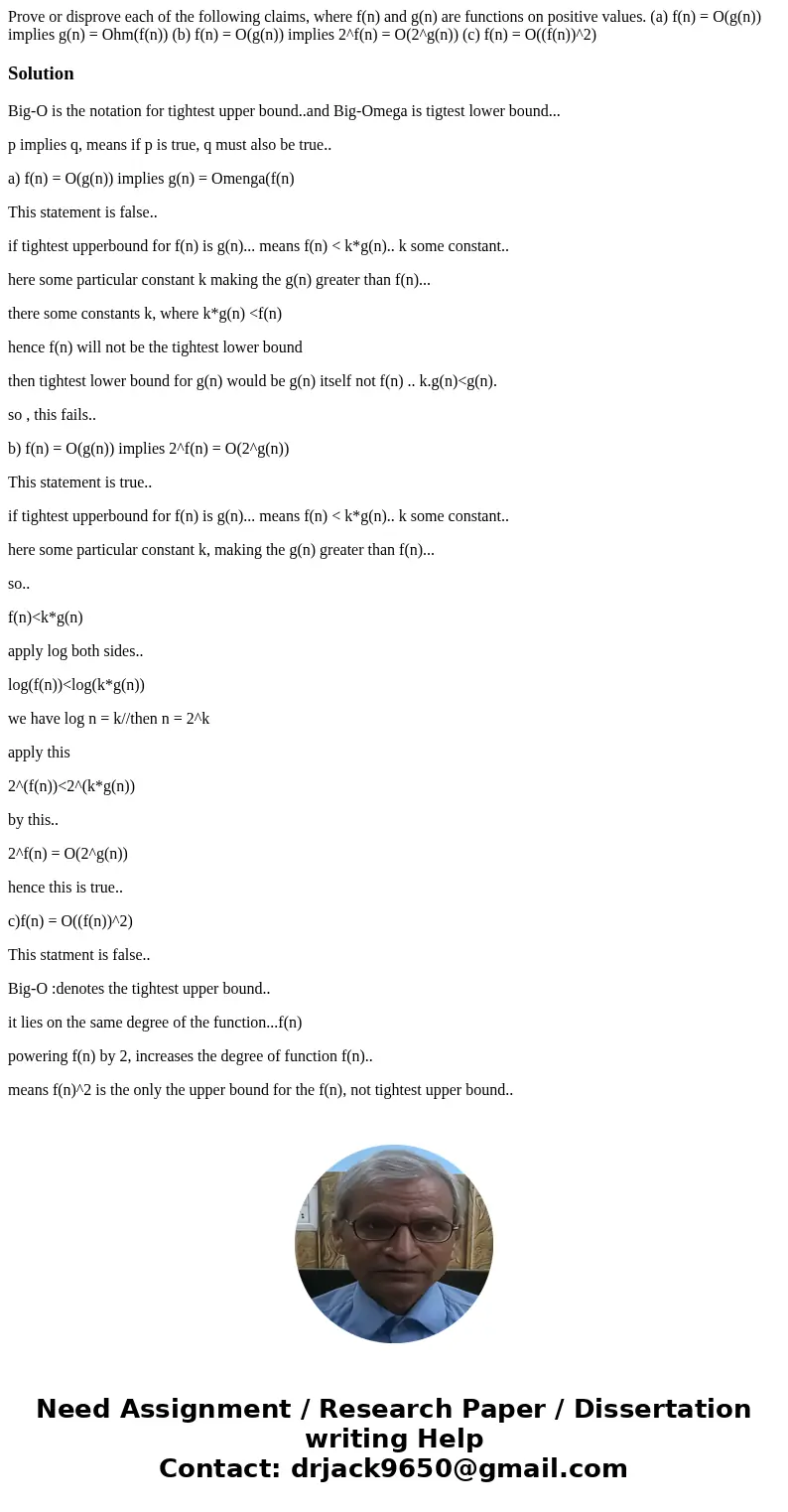Prove or disprove each of the following claims where fn and
Solution
Big-O is the notation for tightest upper bound..and Big-Omega is tigtest lower bound...
p implies q, means if p is true, q must also be true..
a) f(n) = O(g(n)) implies g(n) = Omenga(f(n)
This statement is false..
if tightest upperbound for f(n) is g(n)... means f(n) < k*g(n).. k some constant..
here some particular constant k making the g(n) greater than f(n)...
there some constants k, where k*g(n) <f(n)
hence f(n) will not be the tightest lower bound
then tightest lower bound for g(n) would be g(n) itself not f(n) .. k.g(n)<g(n).
so , this fails..
b) f(n) = O(g(n)) implies 2^f(n) = O(2^g(n))
This statement is true..
if tightest upperbound for f(n) is g(n)... means f(n) < k*g(n).. k some constant..
here some particular constant k, making the g(n) greater than f(n)...
so..
f(n)<k*g(n)
apply log both sides..
log(f(n))<log(k*g(n))
we have log n = k//then n = 2^k
apply this
2^(f(n))<2^(k*g(n))
by this..
2^f(n) = O(2^g(n))
hence this is true..
c)f(n) = O((f(n))^2)
This statment is false..
Big-O :denotes the tightest upper bound..
it lies on the same degree of the function...f(n)
powering f(n) by 2, increases the degree of function f(n)..
means f(n)^2 is the only the upper bound for the f(n), not tightest upper bound..

 Homework Sourse
Homework Sourse